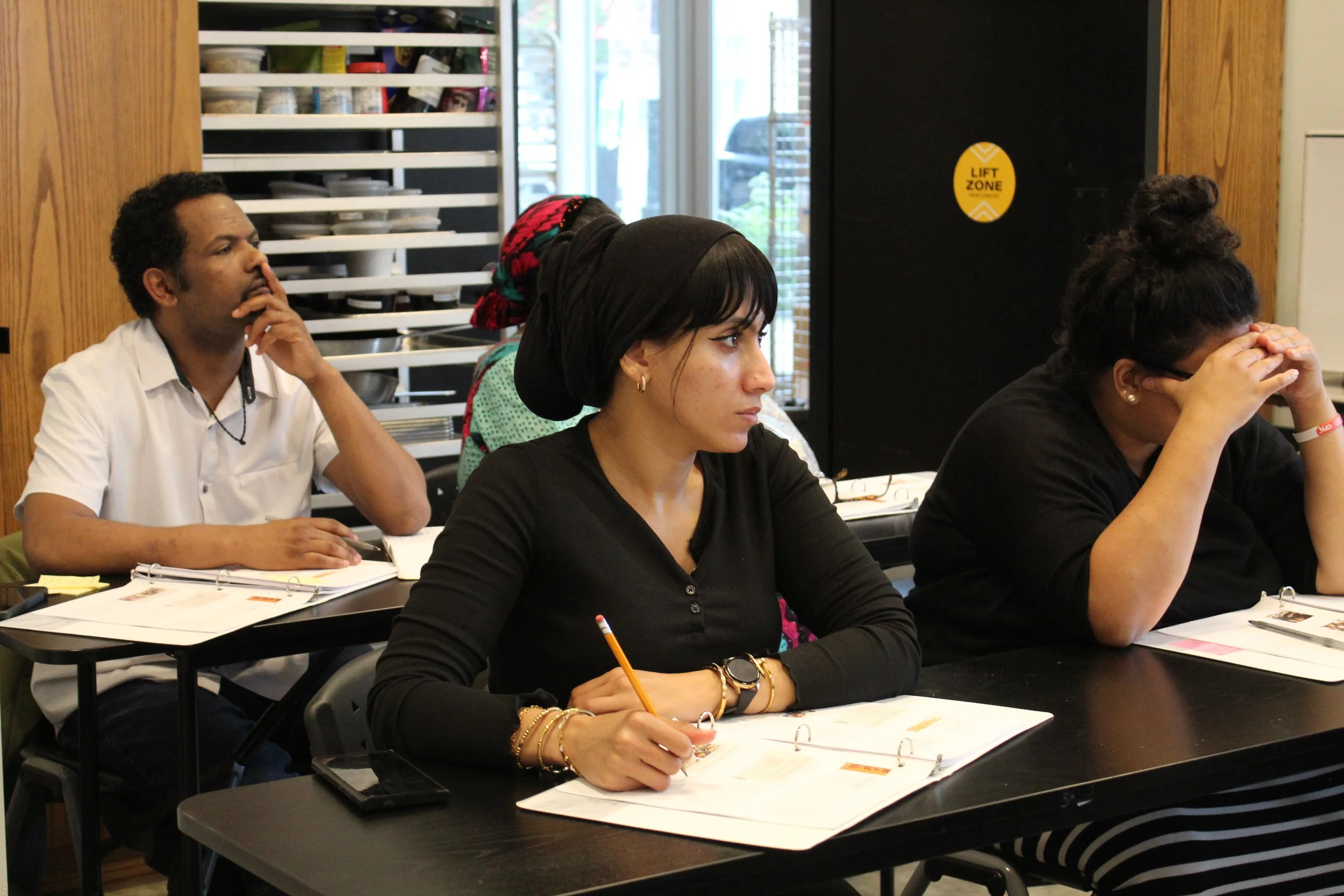Designing for the First-Time Founder: A Different Starting Line
(Image: Enterchange)
Most entrepreneurship programs are designed with a familiar playbook in mind: Legal structures. Pitch decks. Networking events. Sales funnels.
But for many first-time founders—especially those from underresourced communities—the real starting line often looks very different.
It looks like:
A single parent Googling “how to sell food legally from home” between shifts
An immigrant trying to turn a sewing skill into income while navigating a new language
A 55-year-old laid off from a warehouse job, wondering if his side hustle could be something more
They’re not comparing equity rounds. They’re comparing bottom-shelf grocery prices.
The Problem: Mismatched Assumptions
Many well-meaning programs unintentionally assume that participants:
Are familiar with business terms like “MVP” (and no, not the sports kind!)
Have access to reliable Wi-Fi and a laptop
Know what a profit margin is
Have the confidence to take every step
Have someone to call for advice and support
But in many of the programs I’ve led, we’ve found that participants often start from a different place.
And that doesn’t mean they’re less capable—it just means they need a program that’s designed for their starting point.
A Different Kind of Design
When we build for first-time founders, we focus less on “polish” and more on progress. Here’s what that looks like in practice:
We create space for learning and unlearning
For many, the first step isn’t learning to budget—it’s believing they can even use a budget.
For many, the first step isn’t learning to budget—it’s believing they can budget.
We intentionally build in space for:
Mindset coaching
Quiet self-reflection
Peer conversations around confidence, self-doubt, and imposter syndrome
We also establish an infrastructure of support with supportive instructors, experienced mentors, captivating speakers, and a “Purpose Partner,” an accountability peer.
“Very supportive. The way [the instructor] speaks and shares new stories each week gives us more confidence.” — previous incubator participant
We frame entrepreneurship as survival and strategy
Some people come into our programs out of inspiration. Others come out of necessity. Both deserve dignity and practical tools—not gatekeeping or jargon.
We teach concepts through examples, speakers, and representation of folks in their own communities. Participants may have come from challenging backgrounds, but are inspired by others who have paved the path.
“[The instructor] is passionate and knowledgeable. Her style is effective and engaging, making complex topics easier to understand.” — previous incubator participant
We simplify the path—without dumbing it down
We break things down into practical, accessible steps so folks can digest the key concepts and immediately implement them in their businesses.
We present clear steps to escalate folks on the path to making sustainable income:
Idea → Value → Customer → System → Cash
We focus on tools and language that feel relevant and doable—not presentation polish or startup theatrics.
“I appreciated the instructor's clear communication, structured approach, and ability to present complex material in an accessible manner.” — previous incubator participant
We build with flexibility in mind.
We assume people have caregiving duties.
We assume someone’s Wi-Fi might cut out.
We assume they’re learning in stolen moments.
So we design accordingly:
Content that resonates
Mobile-ready tools
Built-in accountability with Purpose Partners
The Bottom Line
If you’re designing a program to serve first-time entrepreneurs, begin with their lived reality—then build toward what’s possible.
That simple shift can turn a participant who’s unsure and overwhelmed into one who says: “I can do this.”
And that’s when real change enters the picture.
Let’s Rethink the Starting Line
If you're building programs for first-time founders—or want to explore how to serve them better—I’d love to hear what you’re working on.
Feel free to reply or reach out directly.
We get better at this by building together.
This article also appears in my LinkedIn newsletter, Blueprints for Impact, where I share reflections, frameworks, and insights from the field. If you're building, operating, or funding programs that expand access to entrepreneurship, I'd love to connect.


